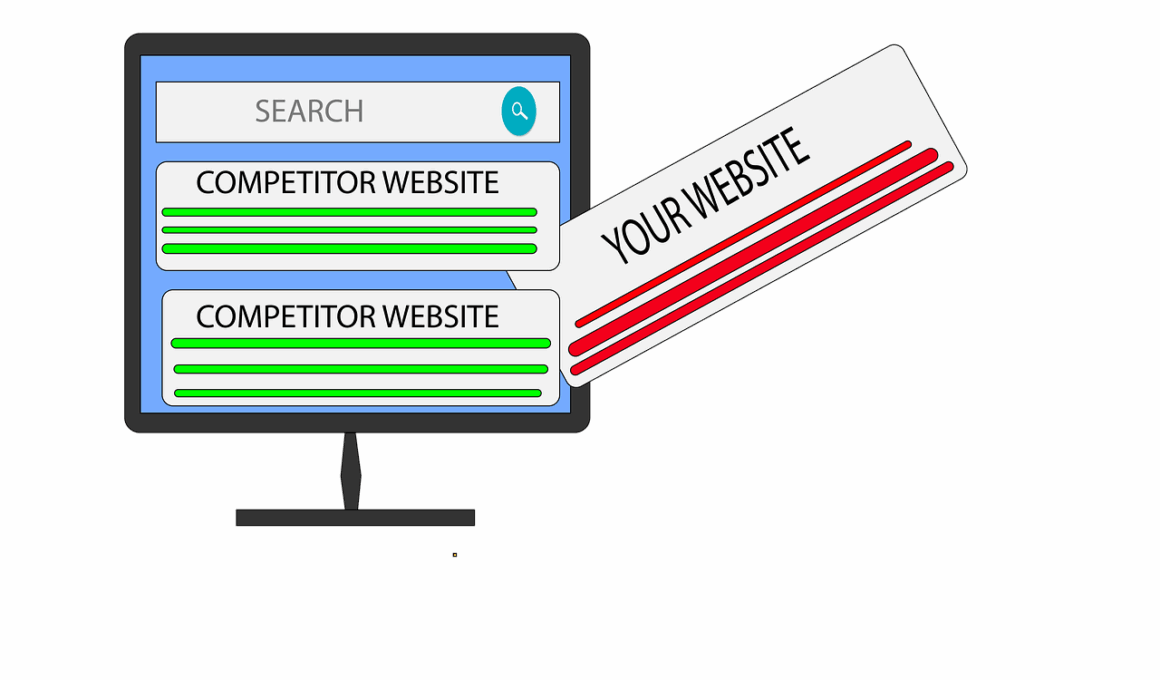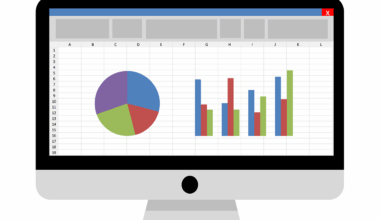How to Conduct Competitor Analysis for Digital Strategies
Conducting competitor analysis is a crucial step in formulating effective digital marketing strategies. This process helps businesses understand their position in the marketplace and identify opportunities to enhance their offerings. Begin by identifying direct and indirect competitors within your industry. Exploring their websites and social media profiles allows for insights into their strengths and weaknesses. Use tools like SEMrush or Ahrefs to evaluate their SEO performance, keywords targeted, and content strategies. Gathering this data provides a clearer picture of the competitive landscape and helps shape your approach. Additionally, examine their customer engagement levels through social media interactions to assess what resonates with their audience. Consider exploring reviews and testimonials to understand customer pain points. This holistic view contributes to developing superior strategies that cater to market demands. Ultimately, competitor analysis is not merely about imitation; it’s about leveraging learned insights to innovate and improve your value proposition. Knowing what works enables businesses to create tailored tactics that stand out amidst heavy competition. Embracing this analytical mindset towards competitors fosters growth and **sustainable success** in digital marketing.
The next step in competitor analysis involves analyzing competitor content and digital presence. Pay close attention to the types of content they produce, such as blogs, videos, and infographics. Identify which content formats generate the most engagement on their platforms. Perhaps they create how-to articles that attract significant audience interaction. Also, look at posting frequency and consistency across various channels. Tracking your competitors on platforms such as Facebook, Instagram, and LinkedIn reveals crucial insights into effective engagement strategies. Furthermore, observe their use of keywords and hashtags, ensuring you also capitalize on trending topics relevant to your industry. Gauge their audience’s reactions and comments to pinpoint successful tactics and areas that may need improvement in your strategy. Websites like BuzzSumo can help analyze top-performing content types, providing additional ideas. Another factor to consider is email marketing strategies, including newsletters and automated responses. Evaluating which email campaigns yield more conversions can refine your approach to customer touchpoints, ultimately enhancing your digital marketing efforts and broadening your reach.
Tools for Conducting Competitor Analysis
There are several valuable tools available for conducting thorough competitor analysis. Utilizing platforms like SimilarWeb or SpyFu can provide comprehensive data about website traffic estimates, primary traffic sources, and audience demographics. These insights can help delineate how competitors attract and retain customers. Moreover, social media analytics tools like Hootsuite or Sprout Social enable you to monitor competitor social media activity and audience engagement levels effectively. You can track metrics such as mentions, follower growth, and content interactions. Google Alerts is another useful tool to keep tabs on competitors and brand mentions online, allowing for timely responses to market shifts. By harnessing these tools, businesses can extract valuable data that informs effective strategic decisions. Consistently reviewing this data also prepares your organization for rapid adaptations in response to competitive pressures. Thus, investing in the right technological resources streamlines and elevates the level of competitor analysis.
Another essential part of competitor analysis is understanding their pricing strategies. Evaluate how they price similar products or services within the same market niche. Frequent checks on competitor pricing can provide critical insights into your pricing strategies, helping you determine whether customers receive value in relation to the prices offered. You may consider offering promotional pricing or value-added packages to encourage customer transformation. Examine their sales channels and processes; online reviews help identify customer perceptions regarding pricing and product worth. Armed with this information, guide your promotional strategies or adjust your offerings accordingly. Competitors might include tiered pricing models that cater to different market segments. Understanding these approaches allows you to align your marketing strategies more effectively. Additionally, monitoring referrals and discounts can help create competitive offerings that boost your market position. Ultimately, a detailed pricing analysis enables a more strategic approach than charging blindly, ensuring your business remains attractive to potential buyers while maximizing profitability in the long run. Thus, careful consideration of pricing strategies enriches your overall digital marketing framework.
Utilizing SWOT Analysis in Competitor Observation
A SWOT analysis combines strengths, weaknesses, opportunities, and threats into an innovative framework for competitor evaluation. Start by identifying competitors’ strengths such as branding, online presence, or technology use that do exceptionally well. Recognizing weaknesses—gaps in product offerings or poor customer service—provides areas where your business can capitalize. Additionally, look for external opportunities that competitors might have overlooked, such as emerging markets or industry trends. Threats might include new entrants into the market or changing customer preferences. This analysis provides a clear view of where your business can differentiate itself among competitors. Translating these findings into actionable marketing strategies allows your organization to leverage its unique strengths. Implementing tactics in your digital marketing campaigns should consistently reflect the insights gained from SWOT analysis. For instance, emphasizing your superior customer service can effectively position your brand against less responsive competitors. Continual application of SWOT analysis provides a dynamic resource for adapting to industry changes, thus fostering resilience and ensuring long-term strategic success in an ever-evolving market landscape.
After gathering insights from your competitor analysis, it’s time to synthesize your findings into actionable strategies. Begin by compiling all your research into a centralized document for further analysis. Categorize your findings into distinct segments: marketing tactics, engagement strategies, content production, and pricing. Assess each competitor’s strengths you can adopt and weaknesses to address. By doing this, you can establish a competency map that aligns your offerings with market demands. Your goal is to highlight areas to improve your brand positioning in the competitive landscape. Prioritized strategies should focus on filling gaps left by competitors and presenting a better value proposition to customers. Creating a content calendar based on your analysis can enhance your digital presence and customer engagement levels. Aligning your marketing campaigns with key opportunities identified can also bolster your market share. It’s critical to continuously monitor competitor actions even after your strategies are implemented to remain agile in response to evolving trends. This synthesis phase guarantees you’re consistently ahead, guiding your team in maintaining momentum and driving growth within your market.
Measuring Success of Competitor Analysis
The measurement of success determined by your competitor analysis is paramount for continuous improvement in digital marketing strategies. Establish clear metrics and key performance indicators (KPIs) based on your initial goals, integrating them into regular reporting and assessment. Focus on assessing how your digital presence has changed since implementing your strategies, especially in web traffic, conversion rates, and social media engagement levels. Tracking growth through analytical tools such as Google Analytics or social media insights provides valuable feedback on your strategy effectiveness. Conduct quarterly reviews to analyze whether your strategies achieve the desired objectives or need adjustments. Committing to this ongoing assessment ensures your methods remain relevant and exhibit adaptability to shifts in the market landscape. Importantly, remember to seek qualitative feedback from your customer base; their perspectives can reveal insights beyond mere statistics. Ultimately, recognizing and celebrating small wins alongside comprehensively analyzing shortcomings cultivates a culture of continuous improvement. A committed approach towards measuring the success of your competitor analysis will help solidify a sustainable competitive advantage in an increasingly digital world.
In conclusion, effective competitor analysis serves as an indispensable tool in shaping digital marketing strategies. By systematically evaluating competitors, identifying gaps, and understanding industry trends, businesses can refine their approaches to meet market demands. Utilizing various tools ensures comprehensive insight into competitor performance, while frameworks like SWOT analysis promote strategic thinking. Recognition of customer perceptions around pricing and value bolsters positioning and helps create competitive advantages. It is equally important to measure success tools and adapt strategies based on real-world feedback. This holistic approach fosters ongoing growth and enables businesses to remain competitive. Engaging and tailoring marketing efforts ensures reaching the intended audience and delivering relevant value propositions. The journey of competitor analysis does not conclude with implementation; ongoing monitoring and adjustments are essential in the ever-changing digital landscape. Ultimately, investing time and resources can yield significant returns as businesses navigate the complexities of digital marketing. Embracing these practices helps sustain success in the dynamic business environment.


